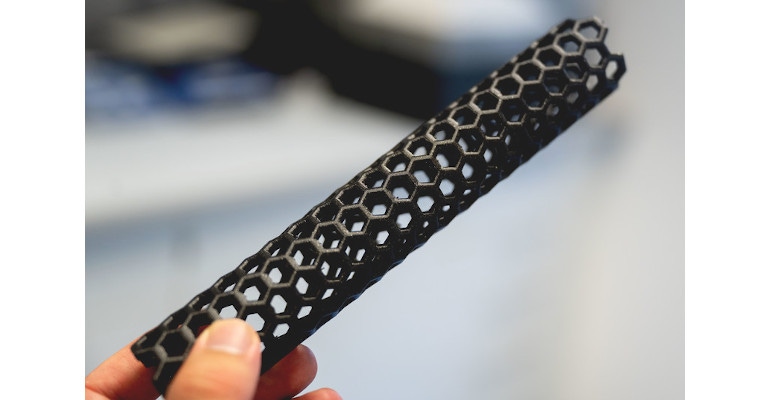Carbon-Nanotube-Based Sensor Can Detect Bacteria, Viruses
The optical sensor paves the way for novel diagnostic mechanisms for COVID-19 and other viruses.
August 22, 2023

Researchers have used carbon nanotubes to develop a new optical sensor that can detect bacteria and viruses, paving the way for novel, highly accurate diagnostic solutions for viruses such as COVID-19, they said.
Researchers from Ruhr University in Bochum (RUB), aided by researchers at Fraunhofer Institute for Microelectronic Circuits and Systems and the ETH Zurich, used fluorescent carbon nanotubes with a novel type of DNA anchors to create the sensors. The anchors act as molecular handles that can be used to conjugate biological recognition units—such as aptamers, or biomarkers, for antibodies—to the nanotubes.
When irradiated with visible light, carbon nanotubes emit light in the near-infrared range, which is not visible to the human eye. However, it's well-suited for optical applications, because the level of other signals in this range is highly reduced, thus making the sensor able to provide results with high accuracy, the researchers said.
The team used this to their advantage in the tubular carbon nanosensors, which have a diameter of less than one nanometer—100,000 times tinier than a human hair. In earlier studies, the team—led by Sebastian Kruss, a professor at RUB—already demonstrated how the fluorescence of nanotubes can be manipulated to detect vital biomolecules. In this latest work, the researchers sought a way to customize the carbon sensors for use with different target molecules in as most straightforward a way as possible, they said.
Testing for Spike Proteins
Key to the success of the sensor's performance were with so-called guanine quantum defects, which were created by linking DNA bases to the nanotube to create a defect in the crystal structure of the nanotube, the researchers said. This changed the fluorescence of the nanotubes at the quantum level as well as enabled the defect to act as a molecular handle for a detection unit.
Moreover, the detection unit itself is changeable; it can be adapted to the respective target molecule depending on which specific viral or bacterial protein scientists aim to identify, the researchers said.
Testing the Sensor
To test the sensor, the team used the SARS CoV-2 spike protein as an example, leveraging aptamers—folded DNA or RNA strands—that bind to the SARS CoV-2 spike protein to detect the presence of the virus.
"Due to their structure, they can selectively bind to proteins,” explained Justus Metternich, a professor in the Department of Chemistry at RUB. “In the next step, one could transfer the concept to antibodies or other detection units.”
The fluorescent sensors indicated the presence of the SARS-CoV-2 protein with a high degree of reliability, the researchers reported in a paper on their work published in the Journal of the American Chemical Society. Moreover, the selectivity of sensors with guanine quantum defects was higher than the selectivity of sensors without such defects, while these sensors also were more stable in solution.
"This is an advantage if you think about measurements beyond simple aqueous solutions," said Sebastian Kruss, who heads the Functional Interfaces and Biosystems Group at RUB. That's because typically for diagnostic applications, scientists "have to measure in complex environments e.g. with cells, in the blood or in the organism itself," he said.
About the Author(s)
You May Also Like



